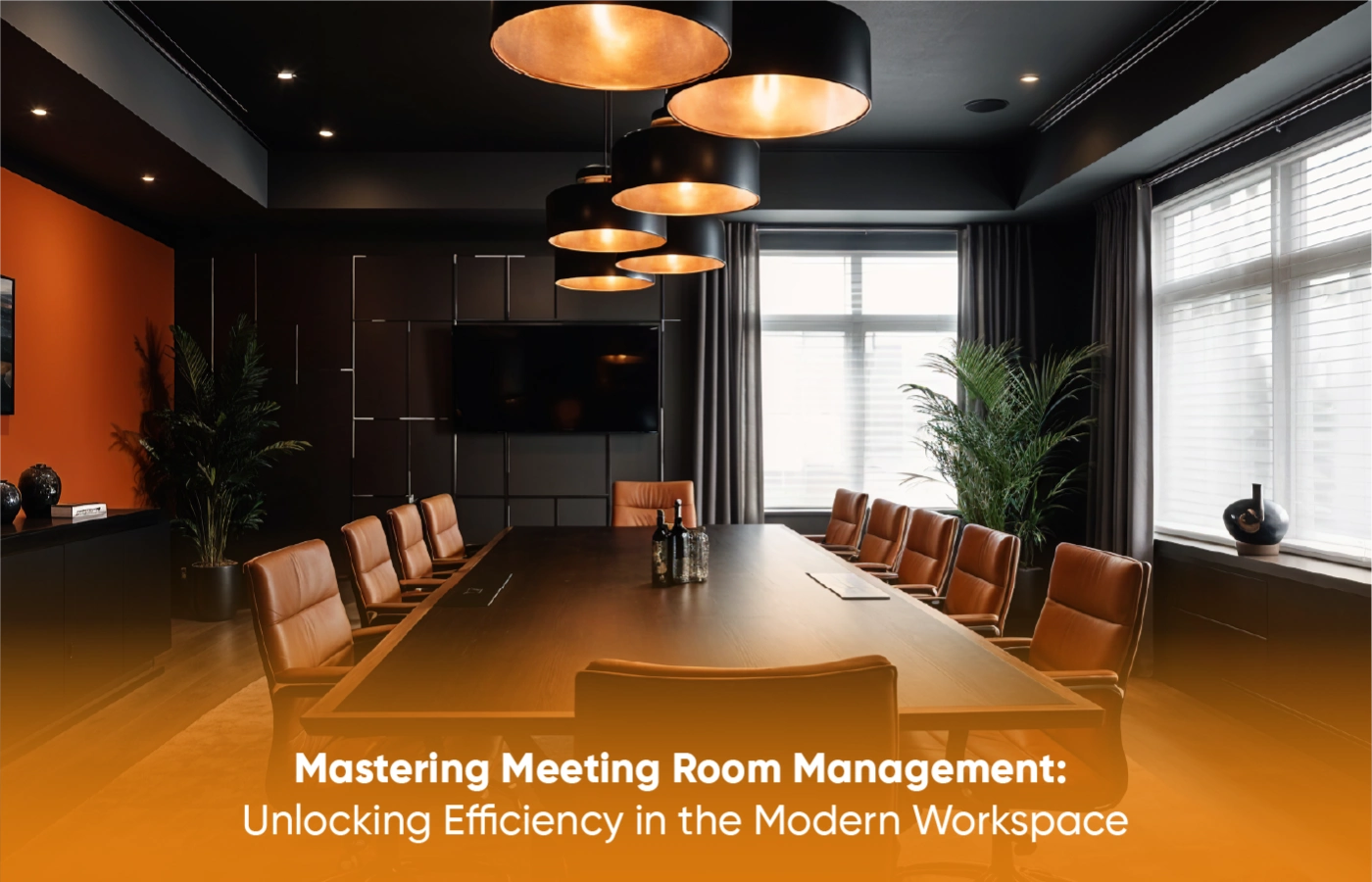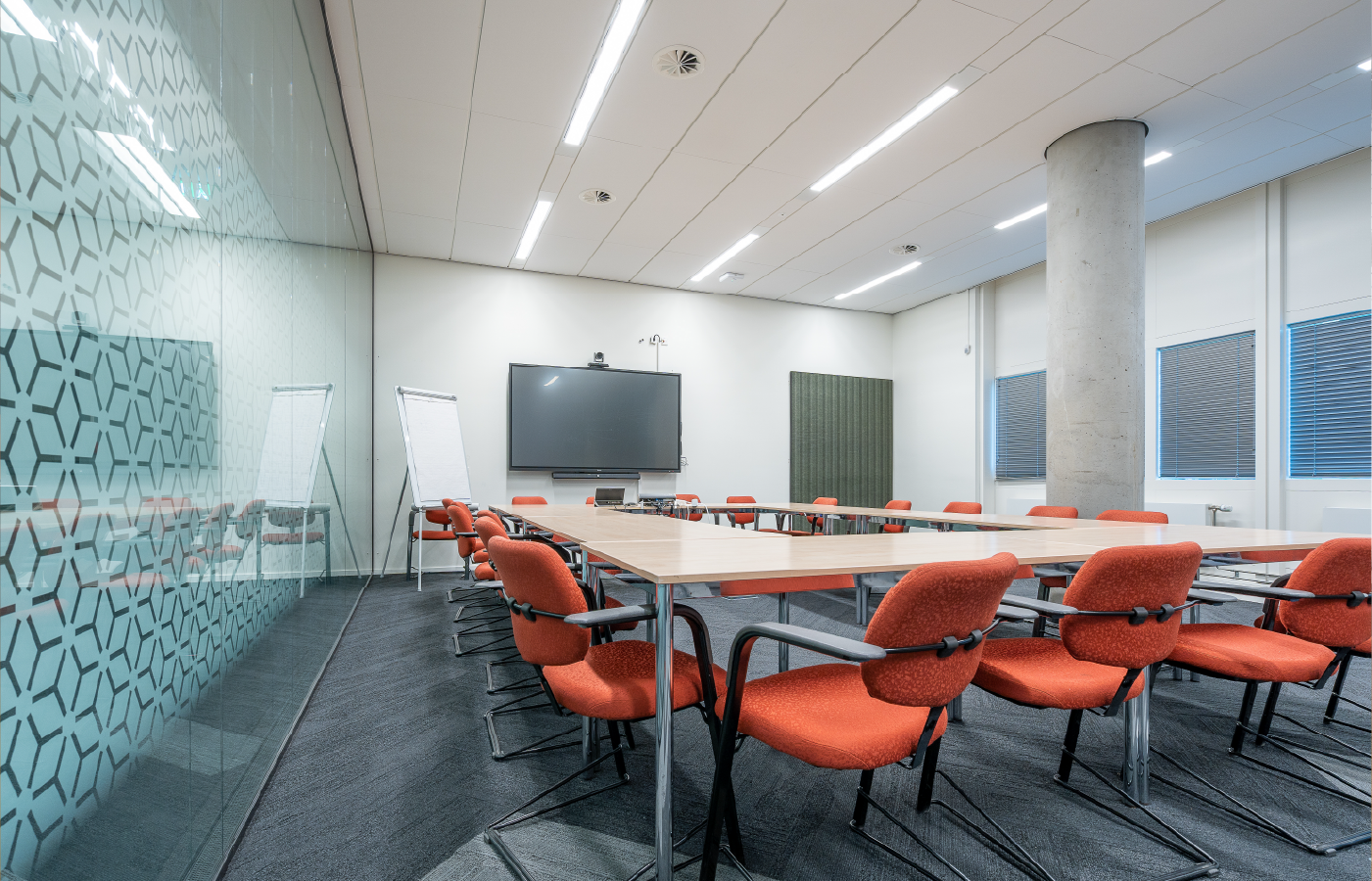Mastering Meeting Room Management: Unlocking Efficiency in the Modern Workspace

Introduction
It’s that time of day again. A hectic workday, a conference that demands single-minded attention, but you show up at the room only to discover it’s not ready or not available. If you’ve been there, you’re not alone. With everything going on in today’s workplace, efficient Meeting Room Management is now a bare necessity for any organization. It’s not so much about booking a space; it’s about having your rooms cleared, available, and set for interaction so your team members can focus on the work.
In this blog, we’ll discuss how optimizing the conference room is essential for boosting productivity.
What is Meeting Room Management?
Meeting Room Management is the process of arranging, scheduling, and optimizing the use of shared spaces in an organization. It is not reserving a room; it is pre-booking the right space at the right time with the right equipment to make collaborating simple.
A well-designed Meeting Room Management system provides a combined, streamlined system where employees can check the room schedule, make bookings, and receive access to the required equipment and facilities. It’s a matter of less time wastage, no room for conflicts, and maximum usage of available office space.
Why Meeting Room Management Matters in the Modern Workspace?
As the office setup is smartly developing, meeting room management has become more important than ever. As hybrid work and continuous demands for flexible collaboration have grown, effective management of these spaces can make or break the success of a project or business initiative.
With evolving trends in the workplace, it’s more important than ever to have a means of managing rooms efficiently. Here’s why:

1. Adaption of space efficiency
A well-managed system helps to ensure that your office space is being utilized effectively. By preventing double booking and undetections, businesses can avail maximum advantage of their available resources.
2. Enhanced Employee Productivity
A smooth and uninterrupted booking process reduces disruption. Employees spend less time searching for available rooms and more on their productivity throughout the day.
3. Enables hybrid work
Companies embracing hybrid work ensures that the rooms are optimized to enable both onsite and remote settings. Smooth meeting room management provides a fluid shift between multiple work environments to enable every worker—irrespective of their location, to contribute effectively and effectively.
4. Reduced Scheduling issues
Poorly managed rooms may have double bookings, last-minute arrangements canceled, and staff exposed to unnecessary delay and frustration caused by unavailable spaces. An efficiently utilized meeting room management system prevents this by maintaining a right room booking without conflict.
5. Better Coordination
Employees do not need to worry if the place is free or the equipment is in place, which makes the collaboration smoother. With an innate system, employees can focus on what really matters, working together to solve problems and run innovation. Increased security and secrecy In many organizations.
Core Capabilities of a Modern Meeting Room Management System
Modern Meeting Room Management systems are designed to streamline the entire booking and scheduling process. Here’s how they optimize efficiency:

1. Centralized Booking Systems
A unified platform allows employees to see real-time room availability, amenities, and booking policies, making it easier to schedule. This centralized approach minimizes confusion, eliminates conflicting bookings, and facilitates smooth scheduling. With easy visibility, employees can make instant, informed decisions. The result is more efficient room usage and increased productivity.
2. Automated Scheduling
Automated scheduling software suggests the best times and rooms based on the size, technology required, and available spaces. Making this automated simplifies it, saving employees valuable time and removing the need for human intervention. It also ensures rooms are well equipped with the necessary resources, such as projectors or video conferencing gear, to provide the needs.
3. Integration with other Systems
Most contemporary systems integrate with applications such as Google Calendar, Outlook, and Office 365, where employees can book rooms seamlessly in their current workflow. The integration gives synchronization between calendars and reduces scheduling errors. The integrations offer real-time feedback, which implies that updates made in one system are automatically transferred across all systems.
4. Real-Time Notifications
Automatic reminders continue reminding participants about their upcoming gatherings. The reminders reduce no-show rates and help maintain rooms effectively used, so that employees are punctual and prepared. Also, reminders may be configured to provide key information, such as location or virtual link, enabling the participants to retrieve the information promptly.
5. Analytics and Reporting
Integrated analytics provide valuable information about room usage patterns, peak booking hours, and idle spaces. Companies utilize this information to maximize space usage and plan more efficiently for the future. Such information enables facility managers to forecast demand and offer resources accordingly. With a data-driven approach, companies can maximize their room management for the highest efficiency.
6. Smart Automation
Occupancy sensors and automatic check-ins assist in confirming that rooms are occupied by someone who has an established booking. In case a room is vacant for a defined time (i.e., 10 minutes), it is left available for booking by others. This helps confirm that all space is being fully utilized and diminishes the possibility of unoccupied rooms sitting vacant.
Conclusion
In today’s office environment, meeting room management enhances collaboration, adapts space, and increases productivity at AastroTech. A well-designed system prevents booking conflicts, improves resource access, and supports seamless hybrid work.
With the right tools and methods, AastroTech provides resources, higher employee satisfaction, and greater efficiency. Good workspace management isn’t merely about scheduling, it’s about building a platform for the team to work seamlessly and innovate. Invest in the best system to bring your team’s potential into reality.
Ready to maximize your workspace? Reach out to AastroTech to install a smarter meeting room management system today!
FAQs:
1. What is Meeting Room Management?
It’s scheduling, planning, and optimizing rooms to be available, conflict-free, and improve collaboration.
2. How does it enhance productivity?
It saves time looking for rooms, reduces conflicts, and keeps rooms ready, allowing employees to concentrate on work.
3. Can it accommodate hybrid work?
Yes, it facilitates smooth room booking and preparation for in-office and remote workers alike, aiding effective collaboration across sites.
4. How can data analytics help?
Analytics track room usage and booking patterns, helping optimize space allocation and plan for future resource needs.
5. Why are real-time notifications important?
They reduce no-shows, ensure rooms are used effectively, and keep participants informed of the meet-up details.
